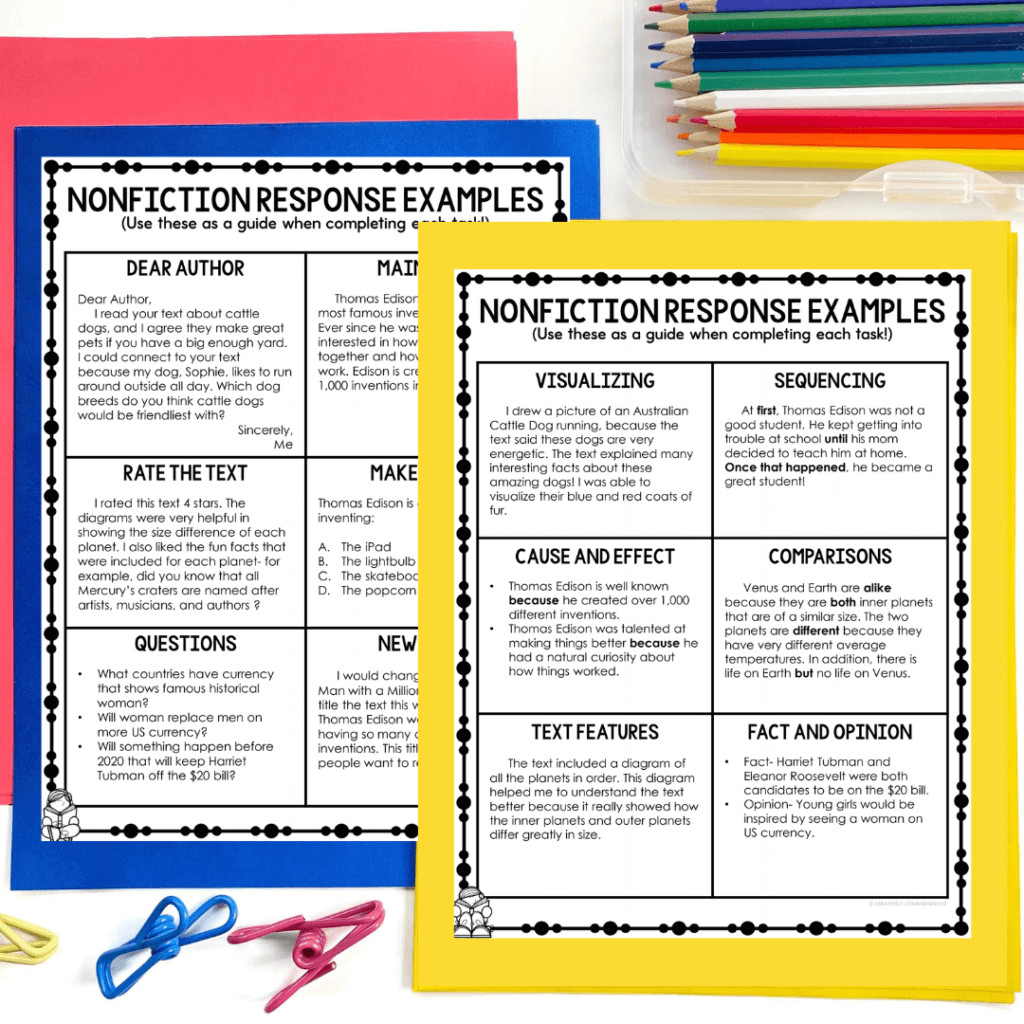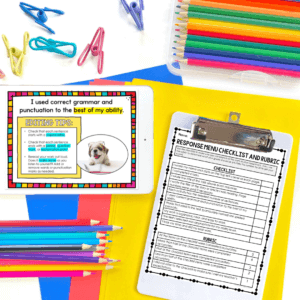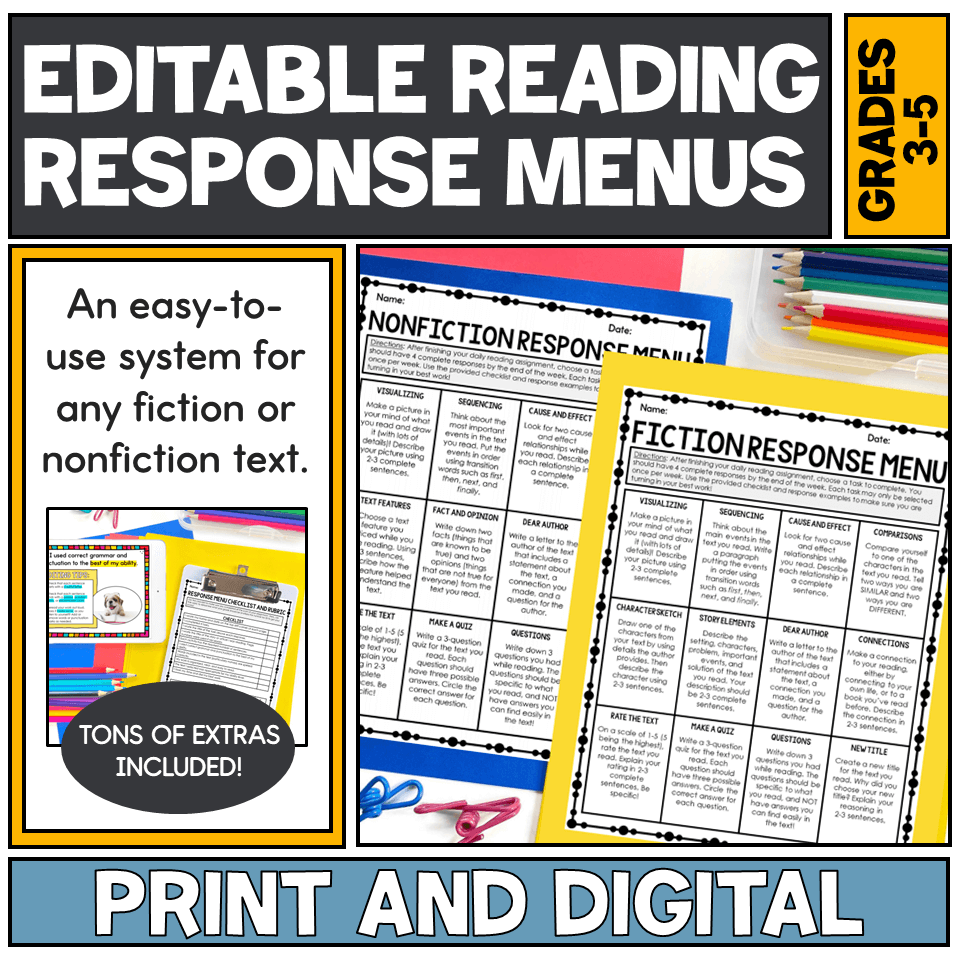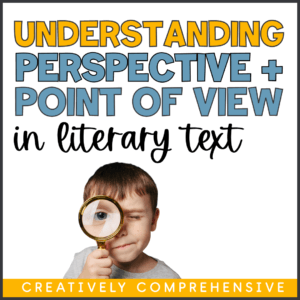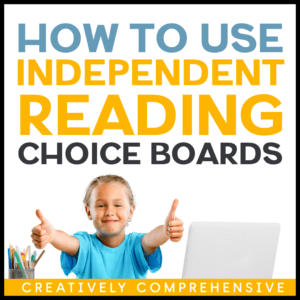Reading Response Journal Success - 3 Simple Tips to Try Today
Having a hard time seeing the benefits of reading response?
If you’ve tried and given up on reading response due to poorly written paragraphs, blank pages, or getting hit with the dreaded, “I don’t know what to write about!,” then this post is for you! With a few tweaks to your routine, you’ll be on the road to reader response success in no time.
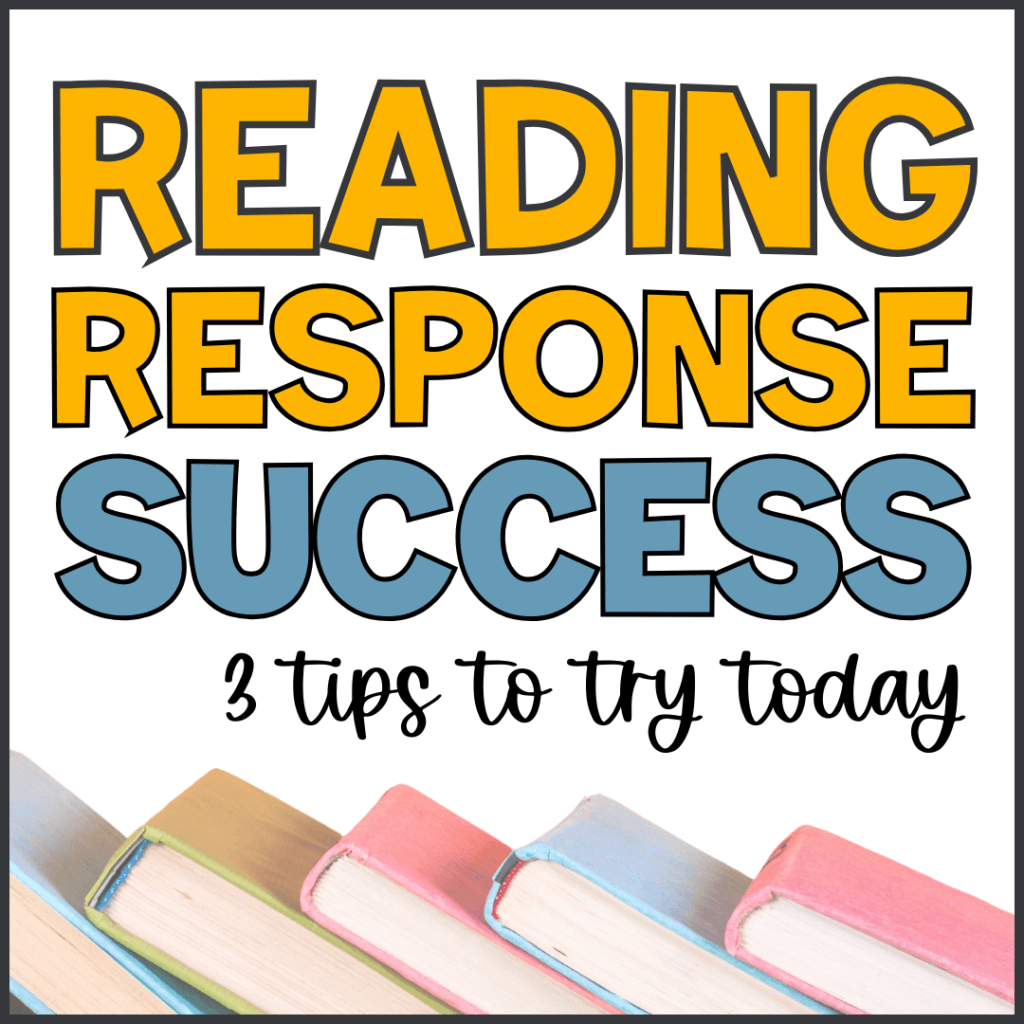
Ready to get started now? Grab the Editable Reading Response Journal Menus and give your students step-by-step directions for writing about reading!
If you stop to think about it, maintaining reading response journals can be hard for young learners, especially as they’re just learning to comprehend. Although responding to reading is a highly beneficial skill, I’ve found most students need a healthy amount of scaffolding before they can write a thoughtful response on their own. These 3 tips can help set them up to succeed:
Front Load the Reading Response Experience
One thing I learned very quickly was that I did not want to spend time creating unique prompts every week. I thought about what skills and strategies students would most likely use when reading both fiction and nonfiction text, and I created a menu of options for each. Students were allowed to choose their menu activities based on what they were currently reading.
However, I didn’t just create the menus and send them off on their own! I created an example of each response that students could keep in their notebooks. We also went over each activity in whole and small group settings before I started grading their independent responses. This allowed students to receive scaffolded practice to build confidence about their journal output.
The exact materials I used in my own classroom are all available in my Editable Reading Response Menus resource on TPT!
Teach Students How to Use a Rubric
I may not know everything, but I’m willing to bet you aren’t interested in hauling a class set of journals home every weekend. Simplify the process by directly teaching your expectations with a checklist and rubric.
Just like everything else, if you hand it out and don’t explain it, the rubric won’t be used correctly. Spend time going over it in class. I even created a slideshow to cover the different things students were responsible for doing. This way, they knew exactly what was expected of them before they turned their work in. I had many happy parents thanking me for this piece because it allowed them to help at home!
With a system like this in place, it will be easy to glance at their reading response notebooks to see that everything is in order. When students learn how to use the checklist, they essentially do most of the grading for you!
Think Outside the Box When it Comes to Reading Response
Depending on your class, you may need to rethink how and when you utilize reading response activities. If you find that your students need a lot of scaffolding, you may wish to work these prompts into your whole group activities at first (or even take a few steps backward and start with graphic organizers or response sheets).
Once your students get the hang of writing a thorough response, these menus are a great option for independent classwork or homework. They go beyond what’s required on a reading log, so that you can see if students are using their time wisely.
No matter how you choose to incorporate reading response, once you get your systems going, you will be so happy you did! This ELA skill is key to successful comprehension.
Want a Head Start?
When I couldn’t find a reading response system I liked, I spent over a month creating fiction and nonfiction response menus, directions, examples, checklists, and more. Then I thought, “What if other teachers could benefit from this?” and my very first TPT resource was born. It’s received two major overhauls and now includes editable and digital options so that you can format everything exactly how you’d like it!
You can head to TPT to see more images and details about this resource.



